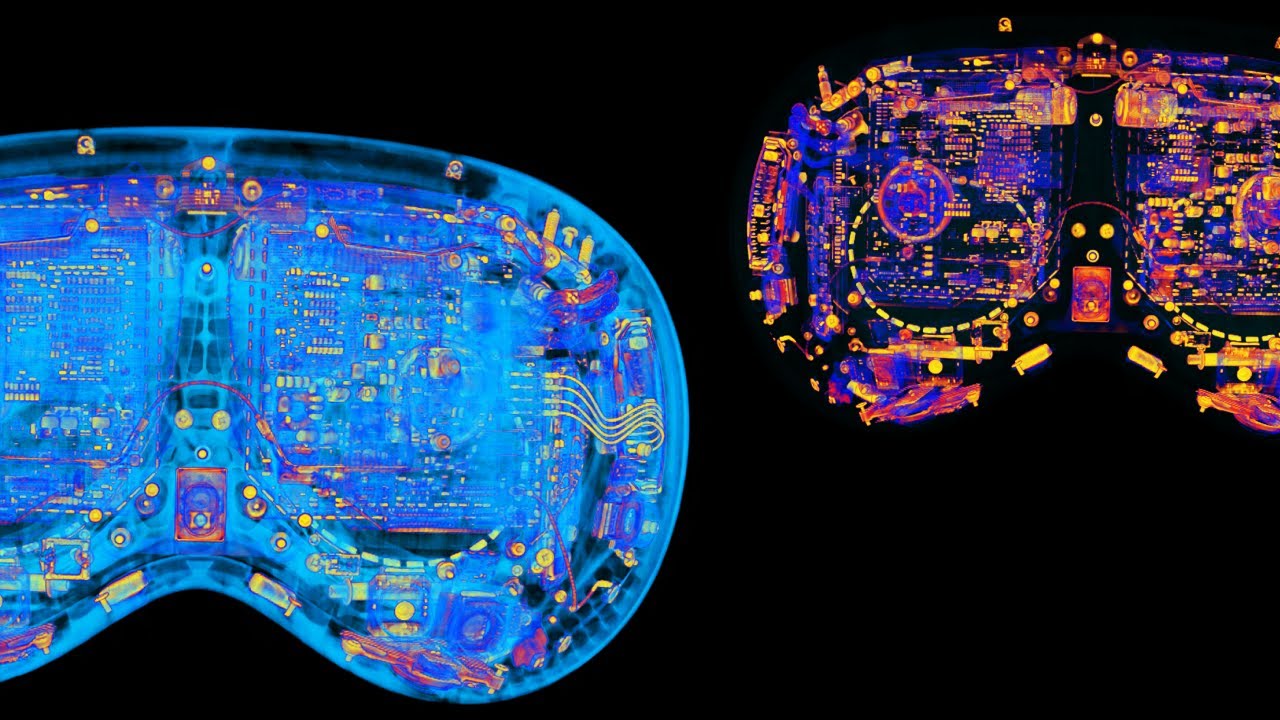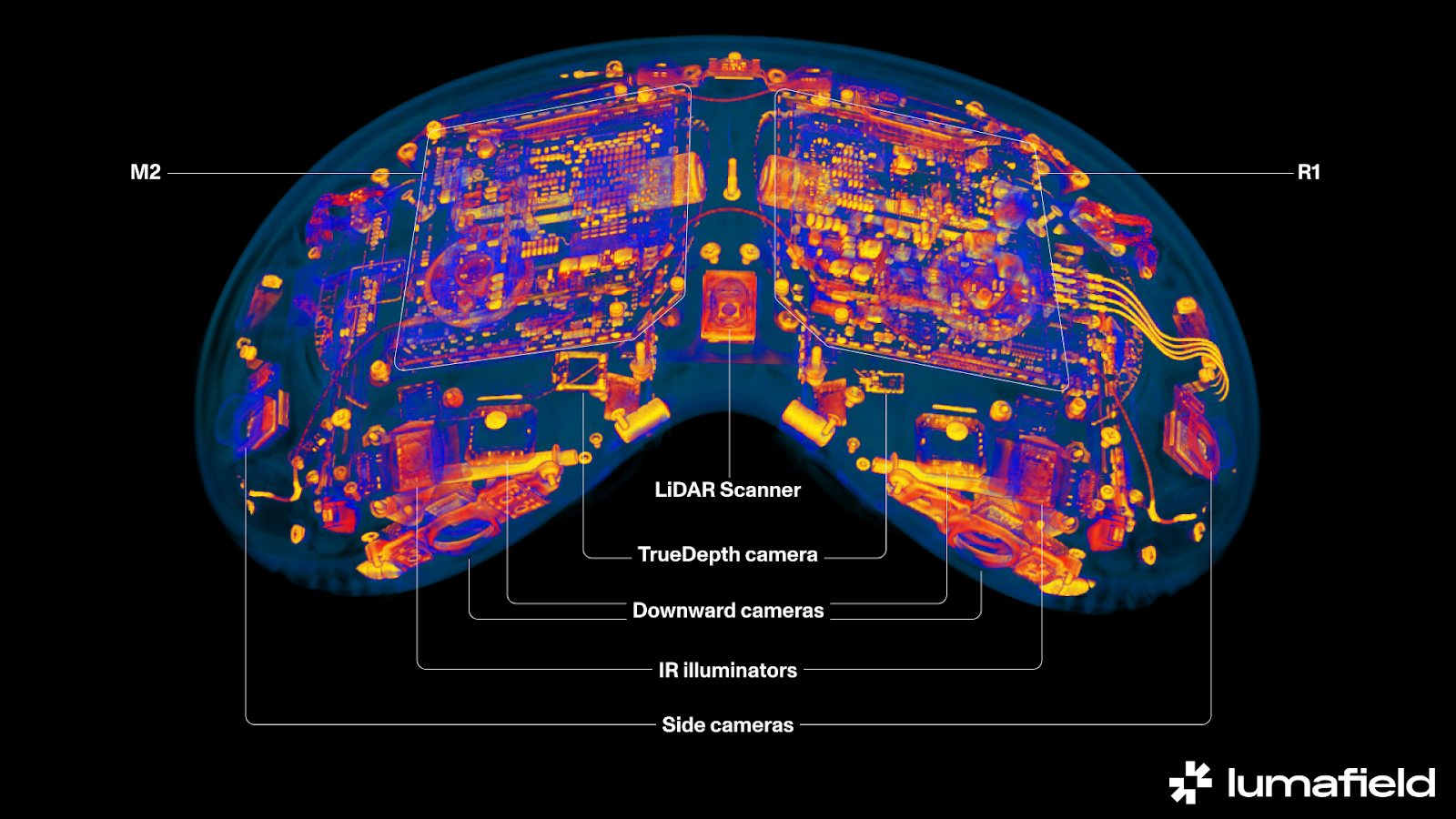
For a moment back there, it seemed like all anybody could talk about was Apple Vision Pro. The AR headset launched to much fanfare in February, accompanied by all manner of weird and wonderful candid shots of early adopters wearing the thing in public. But now that the dust is settling, the people are delving deeper into the inner workings of the device itself.
An X user has CT scanned Apple's headset, along with two Meta Quest alternatives. And not only does the footage provide a fascinating glimpse at the inner machinations of each device, but it also highlights some significant differences between them. (Want to try Apple's headset out for yourself? Check out the best Vision Pro deals.)
We CT scanned an Apple Vision Pro! We also scanned two Meta headsets. Here’s what we found inside, and what it says about the two companies’ approach to AR/VR and to hardware development in general. 🧵 pic.twitter.com/h10yB5bf0WApril 9, 2024
The team at Lumafield, behind the Neptune industrial CT scanner and Voyager analysis software, performed non-destructive scans on Meta and Apple's headsets, revealing two very different design philosophies.
"In our CT scans of the Apple Vision Pro, we discover a product that puts design first. Everything inside the Vision Pro is canted to make the most of the available internal space without detracting from the external contours of the brushed aluminum frame and laminated glass front plate. The main circuit board is built around a flexible PCB ribbon, and electronics are packed in here at different angles."
Meta Quest, however, despite a similarly curved exterior, houses elements all stacked on a single plane. "This traditional main board approach is time-tested and effective, especially for off-the-shelf components," the report suggests. In other words, Apple's is perhaps more ambitious. But this impacts the price, of course. "Apple, at least for now, is going all in for early adopters who are ready to drop $3,500 for a new kind of computer. Meta, meanwhile, pursues a design philosophy focused on ease of use and aimed at democratizing virtual reality by offering their headset at a more affordable price. At $500, the Quest 3 is 1/7th the price of the Vision Pro."

But while the tightly packed components of Vision Pro might be more innovative from a design perspective, the Lumafield team is equally impressed with how Meta manages to maximise on its more budget design. "Meta’s two headsets demonstrate a striking economy of means. They deliver as much as possible using as little as possible. In many ways, the frugal construction and best-in-class value of the devices is as impressive a feat as Apple’s elegant vision statement. The comparison, if one holds, is between what their respective manufacturers call a “mixed reality VR headset” and a “spatial computer,” the latter hoping to usher in a new generation of technology and a new era of media to go along with it. Time, along with those of us who buy and use these, will tell which path wins out in reality—virtual, augmented, and otherwise."
Still, while the internals of both devices might be impressive, theres no getting around the fact that we're not quite past the point of either looking rather goofy in public.







